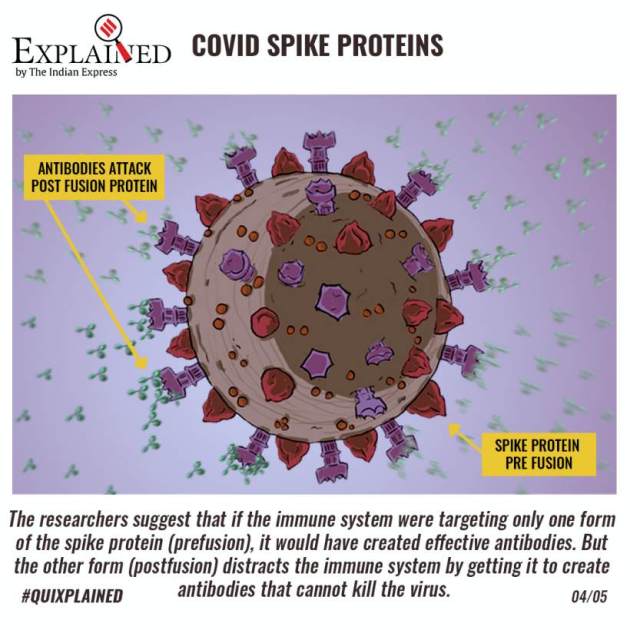Quixplained: How ‘corona’ of the virus changes into a hairpin shape — and why
The spike protein of SARS-CoV-2 — the ‘corona’ in the coronavirus that causes Covid-19 disease — has just revealed new secrets. Researchers have found that the spike protein changes its form after it attaches itself to a human cell, folding in on itself and assuming a rigid hairpin shape.
Updated: August 7, 2020 08:31 IST 1 / 5
1 / 5Spike proteins are protrusions on the surface of a coronavirus. Researchers have found that they change form after they attach themselves to human cells.
 2 / 5
2 / 5The infection process begins when the spike protein attaches itself to the ACE2 receptor on the human cell surface - like a key being inserted into a lock.
 3 / 5
3 / 5The researchers have now found that the spike protein changes shape after it fuses with the cell, assuming a rigid hairpin form. This form sometimes exists even before that spike binds to a cell.
 4 / 5
4 / 5Researchers suggest if the immune system were targeting only one form of the spike protein (prefusion), it would have created effective antibodies. But the other form (postfusion) distracts it by getting it to create antibodies that cannot kill the virus.
 5 / 5
5 / 5Researchers suggest that vaccines be created using only one form (prefusion) as a guide. This would train the immune system to attack this shape in the future, if the virus tries to infect the cell. (Text: Kabir Firaque; Illustration: Sephin)











